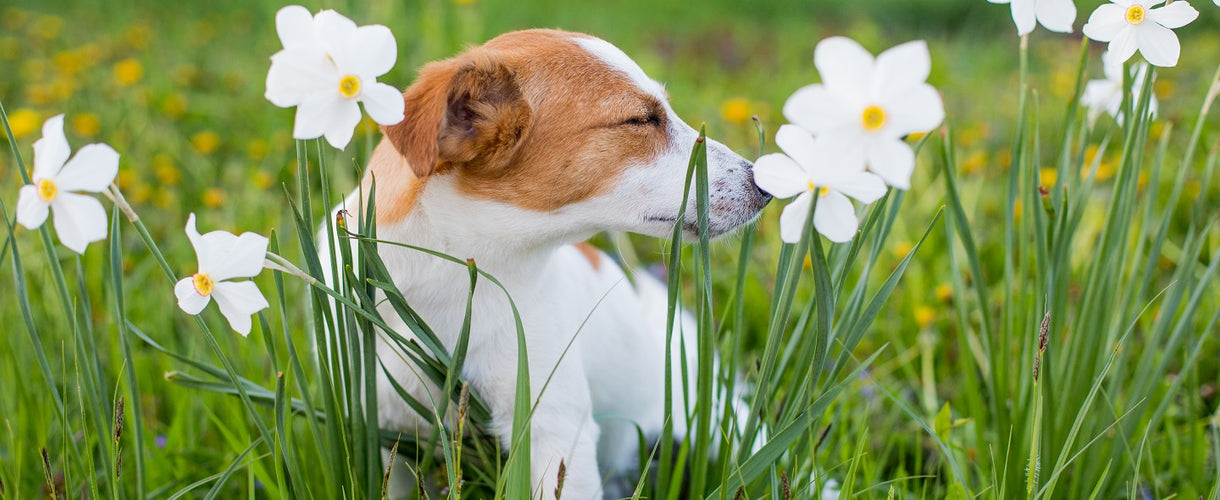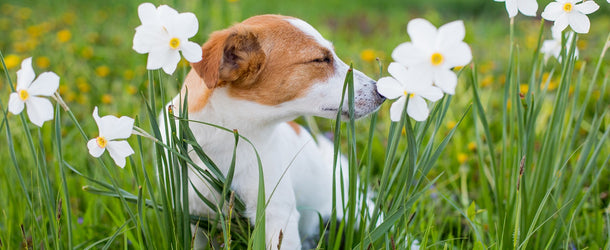

Posted by Emma Oldroyd, on
What Plants are Poisonous to Dogs? Things to Look Out For in Your Home and Garden
Our dogs (especially puppies!) are curious by nature, and quite often during daily walks they may be tempted to lick or chew plants, flowers, and trees.
Sadly, some things they come across in the great outdoors can be potentially dangerous, so it’s important to know what plants and flowers are poisonous to dogs so you can help your dog avoid an upset tummy or worse.
We’ve put together a list of the most common plans which are poisonous to dogs so you can print it off or save it to your phone as a guide when you and your dog are taking on your next adventure.
Always remember to check labels and packaging for potential dangers before planting flowers in your garden.

Toxic Plant FAQs
How do I know if my dog has eaten something poisonous?
The most common symptoms to look out for if your dog has been eating plants and flowers from your garden are:
- Drooling
- Not eating
- Low energy
- Vomiting or diarrhoea – especially if bits of chewed up plants are in it
- Drinking or weeing more
- Rashes
- Red skin
- Mouth ulcers
- Pale gums
- Twitching or seizures
- Collapse
If your dog eats a poisonous plant or is showing any signs of toxicity, call your vet immediately.
Are Dandelions poisonous to dogs?
Dandelions are safe for dogs to eat, including the leaf, root or flower, so you don’t have to worry if your dog decides to munch on one of these in the field.
Is Ivy poisonous to dogs?
Yes, if eaten Ivy can cause your dog to have an upset tummy. Ivy can also cause a skin reaction if your dog comes into contact with Ivy.
Other common plants which can cause an adverse reaction in dogs are tulips, hydrangeas, and bluebells.
How can I keep my garden safe for dogs?
It’s not just plants that can be a danger to your dog when they’re out for a walk or playing in the garden. Try and avoid keeping compost and grass clippings out in your garden, as these can contain dangerous moulds and bacteria.
Common pesticides, weed killers and fertilisers are very often toxic to dogs and wildlife, but they are sometimes a necessity when treating your garden. Avoid spraying any areas your dog usually visits and add covers to keep them out of any areas that you need to treat.
Grass seeds can get stuck in your dog’s skin, especially in their paws, armpits and ears. They can cause irritation, infection and even spread to other parts of the body, leading to potentially serious problems. Look out for grass seeds in the wild too, they are very common in fields of long grass during the warmer months.
For more advice on what to plant to make your garden dog-friendly, speak to our in-store experts or our customer care team online.
